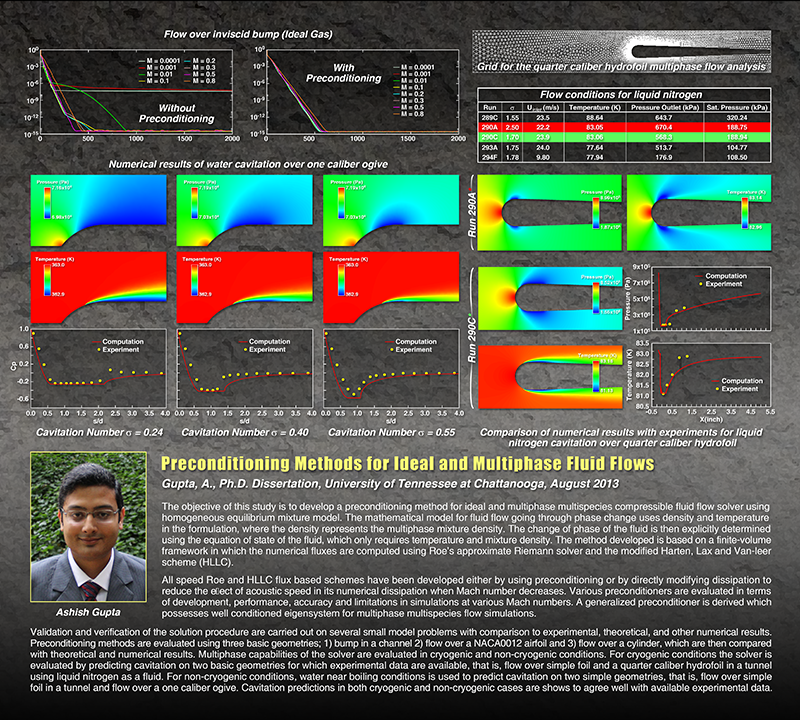Ashish Gupta
Preconditioning Methods for Ideal and Multiphase Fluid Flows
A Dissertation Presented for the Doctor of Philosophy in Computational Engineering, The University of Tennessee at Chattanooga
Ashish Gupta, August 2013
Abstract:
The objective of this study is to develop a preconditioning method for ideal and multiphase multispecies compressible fluid flow solver using homogeneous equilibrium mixture model. The mathematical model for fluid flow going through phase change uses density and temperature in the formulation, where the density represents the multiphase mixture density. The change of phase of the fluid is then explicitly determined using the equation of state of the fluid, which only requires temperature and mixture density. The method developed is based on a finite-volume framework in which the numerical fluxes are computed using Roe’s approximate Riemann solver and the modified Harten, Lax and Van-leer scheme (HLLC).
All speed Roe and HLLC flux based schemes have been developed either by using preconditioning or by directly modifying dissipation to reduce the effect of acoustic speed in its numerical dissipation when Mach number decreases. Various preconditioners are evaluated in terms of development, performance, accuracy and limitations in simulations at various Mach numbers. A generalized preconditioner is derived which possesses well conditioned eigensystem for multiphase multispecies flow simulations.
Validation and verification of the solution procedure are carried out on several small model problems with comparison to experimental, theoretical, and other numerical results. Preconditioning methods are evaluated using three basic geometries; 1) bump in a channel 2) flow over a NACA0012 airfoil and 3) flow over a cylinder, which are then compared with theoretical and numerical results. Multiphase capabilities of the solver are evaluated in cryogenic and non-cryogenic conditions. For cryogenic conditions the solver is evaluated by predicting cavitation on two basic geometries for which experimental data are available, that is, flow over simple foil and a quarter caliber hydrofoil in a tunnel using liquid nitrogen as a fluid. For non-cryogenic conditions, water near boiling conditions is used to predict cavitation on two simple geometries, that is, flow over simple foil in a tunnel and flow over a one caliber ogive. Cavitation predictions in both cryogenic and non-cryogenic cases are shows to agree well with available experimental data.
